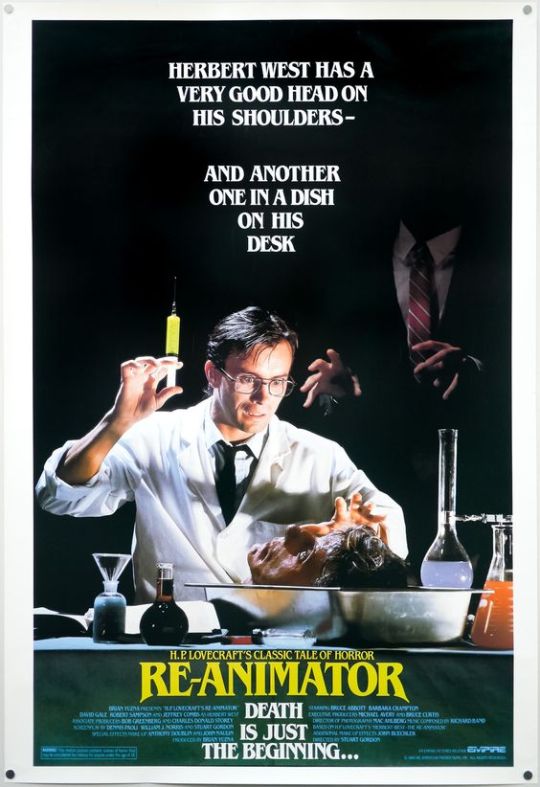#Medical Practice
Text
“For the final test, you can use any resources you seem necessary, and discuss with as many people as you want, even specialist, if they answer you. You know, like in the real world.”
(It was of a small course based on evaluating the quality of evidence, sadly).
20 notes
·
View notes
Text

Abortion has historically and will always be a right for both women and people who menstruate, because while progress can be slowed down it can’t ever be stopped!
🩺❤️
#history#abortion#ancient egypt#human rights#medical practice#mummification#ancient history#kahun papyrus#medicine#medical history#abortion rights#abortion history#egyptology#people who menstruate#womens rights#egyptian culture#ebers papyrus#ancient medical practice#ancient world#ancient egyptian history#papyrus#healthcare#nickys facts
24 notes
·
View notes
Note
You previously mentioned that Marriage helped you to empathise and support women outside your (archaic?) bias.
Did marriage also make you a better doctor? Were you able to understand women’s ailments better once you became more familiar with what ‘marriage‘ involved? And similarly in specific respect to the female anatomy?
What an insightful question.
Yes, it has. I wouldn't say specifically with respect to anatomy, because anatomy is what it is. The parts of the body have remained unchanged over the centuries I've practiced. So having unfettered access to my wife's body, when she lets me, is not what makes me a better doctor—but having learned to listen to her and to respect her evaluation of a situation certainly is.
Having a wife and daughters and especially now a granddaughter has forced me not to think of every woman I encounter as "fairer" but instead to appreciate their strength and resilience and to take seriously their ability to understand their own bodies and reactions. I am much less prone to dismissal or minimization than I once was.
I didn't pursue board certification in obstetrics and gynecology until the late 1960s. Rosalie put her foot down about it. Although my specific credentials at any given point are usually forged, I never actually allow my training to lapse, and that training in particular is one I've grown to care about a great deal.
16 notes
·
View notes
Text
"Media stories sometimes present [abortion] as a kind of medical quandary. The Washington Post recently wrote:
There was a woman in Wisconsin carrying a fetus with anencephaly, a fatal birth defect in which parts of the brain and skull are missing. With abortion likely illegal in the state, the clinic had canceled her appointment for a termination later that day. But forcing her to continue the pregnancy was cruel and risked complications. What should I do? the doctor wrote. As colleagues in other parts of the Midwest responded with leads for out-of-state clinics, Verma mentally added the case to her growing list of gray-area situations where the new abortion bans fail to capture the complexity of modern medicine and leave doctors in the lurch.
But is the medicine truly complex here? I don’t think it is. It seems pretty straightforward. The patient was carrying a fetus with a fatal brain defect and had chosen to have an abortion. Forcing her to continue to carry the pregnancy would be cruel and a risk to her health. The problem is not the 'complexity' of the doctor’s decision. It’s that the unelected Supreme Court decided to intrude on this medical matter and overturn the patient’s right to receive this medical care. The law makes no sense in light of medical reality. The doctor in the article said as much: 'The decision is creating confusion and fear because we know what to do medically, but we don’t know what we can do based on the law.' The quandary, then, is not about what care we should be providing, but how to deal with the fact that the law is directly prohibiting doctors from providing proper care.
The Post article goes on to consider other dilemmas such as how other medical procedures could be impacted by concern for the fetus, or how some state laws are so complex as to be indecipherable to doctors. The assumption is that each and every professional will (or ought to) be extra careful to make sure they follow the law to the letter. Again, while this may be what doctors are used to, this is wrong. The proper question is why anyone in the healing profession should follow this ruling at all. The medical profession ought to outright refuse to comply. Professionals can be complicit in the state’s overreach and violation of patients’ medical freedom — which will keep us on a path toward state control over women’s bodies and state-mandated unethical healthcare, which Roe rightly treated as unconscionable — or they can be what the public needs them to be: humane professionals who will live up to the great responsibility entrusted to them and who will protect their patients from harm."
- Lily Sánchez, from "Abortion Restrictions Force Medical Personnel To Commit Grave Ethical Violations." Current Affairs, 30 June 2022.
#lily sánchez#quote#quotations#women's rights#reproductive rights#women's health#bodily autonomy#abortion#medical practice#medical ethics#healthcare#roe v. wade#dobbs v. jackson women’s health organization#scotus
11 notes
·
View notes
Text



Medic has a somewhat unusual charm...
#cw scopophobia#cw horror#heavymedic#tf2 medic#tf2 heavy#tf2#team fortress 2#art#It's funny how this started out as a coloring and render practice hehe
9K notes
·
View notes
Text
How to Choose the Right Biopsy Needle for Your Practice

In the ever-evolving landscape of medical diagnostics, biopsy needles play a pivotal role in acquiring tissue samples for accurate pathological examination. This article explores the crucial aspects of selecting the right biopsy needle for your practice.
Biopsy needles serve as indispensable tools in medical practices, facilitating the extraction of tissue samples for diagnostic purposes. The choice of the right biopsy needle is a decision that significantly influences diagnostic accuracy and patient outcomes.
What is Biopsy needle
A biopsy needle is a medical instrument use to obtain a small sample of tissue from a living organism for diagnostic purposes. Biopsies are commonly performed to investigate and diagnose various medical conditions, including cancer, infections, inflammatory disorders, and other abnormalities. The collected tissue sample is then examined under a microscope by a pathologist to determine the nature of the cells and the presence of any abnormalities.
Understanding Biopsy Needle Types
1.Core Biopsy Needles
Core biopsy needles operate on the principle of extracting a cylindrical sample of tissue, allowing for a comprehensive analysis. The advantages lie in obtaining intact tissue architecture, aiding precise diagnosis. However, practitioners must be mindful of the limitations, such as potential tissue fragmentation during extraction.
2.Fine Needle Aspiration (FNA) Needles
FNA needles, on the other hand, involve the aspiration of cellular material for analysis. This technique is particularly suitable for soft tissues and organs. Understanding the nuances of FNA procedures and its adaptability to different tissue types is crucial for practitioners seeking optimal diagnostic results.
3.Vacuum-Assisted Biopsy Needles
Integrating vacuum technology into biopsy needles enhances the efficiency of tissue collection. This method proves beneficial in obtaining larger tissue samples with minimal passes, reducing patient discomfort. Knowing the indications for using vacuum-assisted biopsy needles ensures their appropriate deployment in specific cases.
Understanding the Importance of Choosing the Right Biopsy Needles
When it comes to performing biopsies, choosing the right biopsy needle is paramount for ensuring accurate and successful procedures. The biopsy needle you select can significantly impact the quality of the tissue sample obtained, the patient’s comfort during the procedure, and the overall efficiency of the biopsy process.
Factors to Consider When Selecting a Biopsy Needles
1.Needle Gauge and Length
The gauge and length of the biopsy needles play a crucial role in determining its suitability for different types of tissue samples and procedural requirements. Smaller gauge needles are ideal for soft tissues, while larger gauge needles are better suite for tougher or denser tissues. Similarly, the length of the needle should be choose base on the depth of the tissue to be sampled.
2.Needle Tip Design
The tip of the biopsy needles can come in various designs, including beveled, trocar, and side-cutting tips. Each tip design serves a specific purpose and is suite for different biopsy techniques and tissue characteristics. Understanding the advantages and limitations of each tip design is essential for making an informed decision.
3.Procedure Requirements
Different biopsy procedures may necessitate specific needle characteristics such as size, gauge, and penetration depth. Understanding the unique requirements of each procedure is essential for selecting the most appropriate biopsy needle.
4.Compatibility with Imaging Modalities
For guide biopsy procedures, such as ultrasound or CT-guide biopsies, it is crucial to ensure that the biopsy needles are compatible with the imaging modality being used. This compatibility ensures accurate placement of the needle and precise targeting of the tissue to be sampled.
5.Sample Retrieval Mechanism
Biopsy needles may feature different sample retrieval mechanisms, such as manual or automatic devices for retaining the tissue sample. The choice of sample retrieval mechanism should align with the specific procedural requirements and the desired sample size and quality.
6.Patient Comfort and Safety
Considering the patient’s comfort and safety during the biopsy procedure is essential. Choosing a biopsy needle with features that minimize trauma, reduce pain, and ensure precise targeting can significantly improve the overall patient experience.
7.Cost and Accessibility
Balancing the cost of biopsy needles with their quality and accessibility is essential for optimizing resources within a healthcare practice. Evaluate the long-term benefits of investing in high-quality biopsy needles that align with your practice’s budget and operational needs.
The Importance of Consulting with Peers and Experts
Given the multitude of factors to consider when selecting a biopsy needle, consulting with peers, experienced colleagues, and product experts can provide valuable insights and recommendations. Sharing knowledge and experiences within the medical community can help in making informed choices and staying updated on the latest advancements in biopsy needles technology.
Conclusion
Choosing the right biopsy needle for your practice requires careful consideration of various factors, including needle gauge and length, tip design, compatibility with imaging modalities, sample retrieval mechanism, and patient comfort and safety. By staying informed about the available options and seeking guidance from peers and experts, healthcare professionals can ensure that their biopsy procedures are conducted wi0th precision, efficiency, and patient-centric care.
Read More : How to Choose the Right Biopsy Needle for Your Practice
#Biopsy Needle#Medical Devices#Surgical Instruments#Healthcare#Medication#Needle Manufacturers#Medical Practice
0 notes
Text
New Practice Details
Dr Peter Geoffrey Lucas has opened a new practice within Herston Health alongside a team of medical and allied health practitioners.
Herston Health is located directly across the road from the Royal Brisbane and Women’s Hospital. It is easily accessed by public transport, located directly next to Herston station and 600m walk from RBWH station. There is free, onsite parking and wheelchair access for patients.
Appointments can be booked online and rebates are available with a GP referral, through private health, and/or for DVA gold card holders. For more information, contact our support team at [email protected] or call 0498 628 394.

0 notes
Text
Understanding the Length of Your Battle with Ragweed Allergies

As the summer winds down and fall approaches, many people prepare to enjoy the cooler weather. However, this seasonal change isn't so pleasant for everyone, particularly those who suffer from ragweed allergies. The appearance of ragweed pollen in the air triggers bouts of sneezing, itchy eyes, and runny noses, making it crucial to understand how long ragweed allergies last. This guide will delve into the timeline of ragweed allergies and offer actionable tips for relief.
The Ragweed Season: When Does It Start and End?
Ragweed season generally begins in late summer, typically around August, and can last until the first frost sets in, which is usually in October or November. However, these timeframes can vary depending on your geographical location. For instance, in the southern United States, ragweed season might linger a bit longer due to the milder climate.
Duration of Symptoms: How Long Do They Last?
If you're one of the unlucky individuals affected by ragweed pollen, your symptoms can persist throughout the entire ragweed season. However, their severity can fluctuate based on various factors such as wind patterns and pollen count. On high pollen count days, expect the symptoms to worsen, but they can also subside on days with low pollen concentration or rain, which helps clear the air.
Impact on Quality of Life
Ragweed allergies can be incredibly disruptive, affecting your concentration at work, sleep quality, and overall well-being. The incessant sneezing, congestion, and discomfort can wear you down both physically and emotionally. Thus, understanding the duration and peak times of ragweed season can help you prepare better for the discomfort ahead.
Managing Symptoms for the Long Haul
Since ragweed allergies can last for several months, you’ll need a long-term management plan. Over-the-counter antihistamines can provide temporary relief, but for ongoing symptoms, consult your healthcare provider for a tailored treatment approach, which may include prescription medications or even allergy shots.
Tips for Relief:
Stay Indoors: On days when the pollen count is high, it's advisable to remain indoors and keep windows closed.
Air Filters: Invest in a high-quality air filter to capture pollen and improve indoor air quality.
Hydration: Drinking plenty of fluids can help ease a sore throat and relieve some symptoms.
Consult an Allergist: For severe symptoms, a consultation with an allergist is recommended for specialized treatment options.
Conclusion
Ragweed allergies can be a prolonged ordeal, lasting from late summer until the first frost. However, by understanding the timeline and implementing effective management strategies, you can mitigate the symptoms and improve your quality of life. Though it might be a lengthy battle, proper preparations and treatments can certainly help you win the war against ragweed allergies.
0 notes
Text










TF2 x Steven Universe ⭐️
guess who’s bacc with another crossover au that nobody asked for 😎
pls dont ask me about lore/story/drawing fusions i have no idea i just wanted to draw the mercs as gems lol
but id love to hear ur ideas!
edit: if you ever wanna draw about this go ahead! just tag me :)
#my art#tf2#team fortress 2#fan art#lennylink#tf2 spy#tf2 scout#tf2 engineer#tf2 medic#pyro tf2#tf2 demoman#tf2 soldier#sniper tf2#tf2 heavy#tf2 heavymedic#engiespy#speedingbullet#practical espionage#boots n bombs#steven universe au#steven universe#crossover#fanart#tf2 fanart#tf2 napoleon complex#sniperscout#demosolly#soldierdemo#crystal gems#au
4K notes
·
View notes
Text
Student 1: ... that patient’s last hospitalization had, like, 60 pages of evolutions. I ended up just reading the epicrisis.
Student 2: That’s... that’s what epicrisis are for.
12 notes
·
View notes
Text

When you into palm readings, but wish they were more gross!
🤢
#history#piss prophet#uroscopy#uromancy#medical practice#medieval#color wheel#medical history#disgusting#funny#medieval europe#european history#predict the future#middle ages#fortune telling#funny history#uroscopy wheel#gross#medieval history#historical practices#nickys facts
4 notes
·
View notes
Text



body practice
#whatever happens to this post happens#as this is majorly practice; my headcanons are not very set in stone. translation: don't be an idiot on my post#tf2#team fortress 2#tf2 art#tf2 fanart#scout#soldier#pyro#demoman#heavy#engineer#medic#sniper#spy#tf2 jeremy#jane doe#demo#tavish degroot#heavy weapons guy#engie#mick mundy#digital art#artists on tumblr#🚐 art#lgbt
10K notes
·
View notes
Text
0 notes
Link
Top 5 AdvancedMD EMR Alternatives for Your Practice (2023)
1 note
·
View note
Text

i finally finished this... i can die now..........
here is the reference picture, which is a poster for the movie Re-Animator (1985)

#i've been working on this all week#kinda proud of this ngl#this started as a silly funny practice#because i saw the poster on pinterest and said haha tf2 reference#then boom#aight then#i'll probably print it...#maybe..........#anyways#re animator#reanimator 1985#team fortress 2#tf2#tf2 fanart#tf2 medic#tf2 spy#meet the medic#artists on tumblr#digital art#digital illustration#my art
2K notes
·
View notes